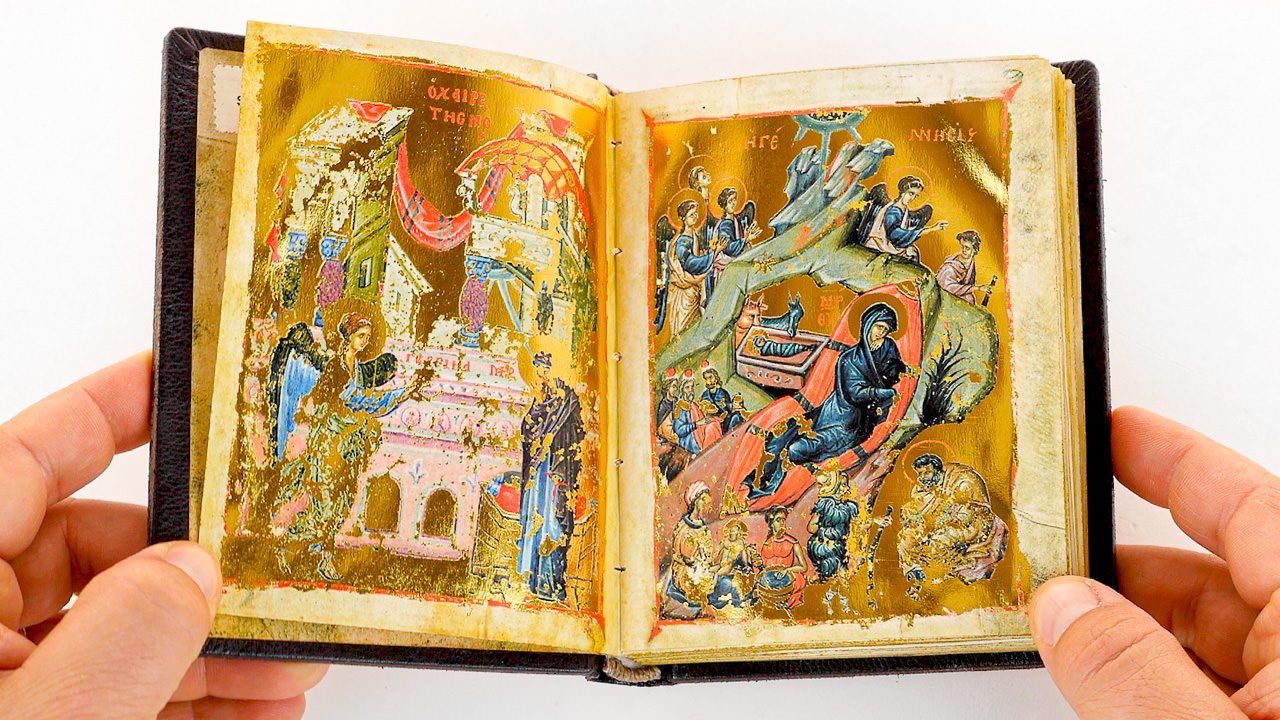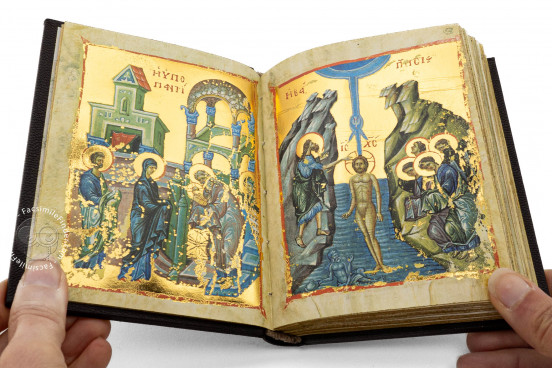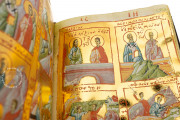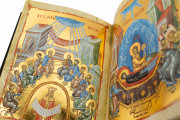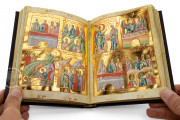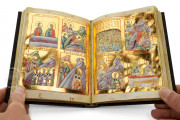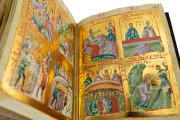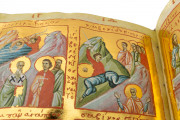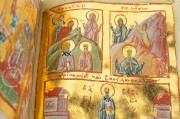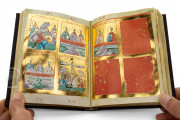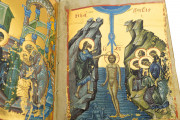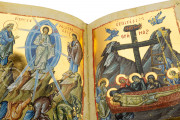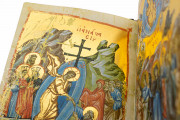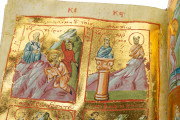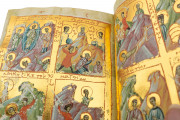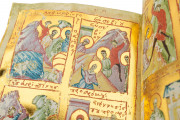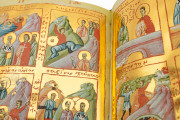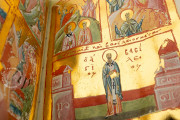Small in stature but great in rarity and preciousness, the Oxford Menologion is a one-of-a-kind manuscript. The gem of the prayerbook offers insight into the most intimate personal devotion of a member of the fourteenth-century Byzantine elite.
With the verbal portion limited to two texts in Greek, the lavish pocketbook contains a pictorial calendar of saints arranged by their feast days from September to August.
The series is bookended by the feasts dedicated to the Lives of Christ and the Virgin, and a cycle focusing on St. Demetrios, patron saint of the city of Thessaloniki and namesake of the manuscript's patron. 368 single scenes are thus distributed among 103 full-page miniatures on highly reflective gold grounds.
Allies Against the Swarm of Indomitable Passions
Painted in a palette predominated by bright reds, mauves, laurel greens, and teals, the Menologion section of the manuscript features one image from the lives of saints for every day of the year arranged four to page.
Preceding these are ten full-page miniatures dedicated to the Lives of Christ and Virgin, while the manuscript ends in a series relaying the life and passion of St. Demetrios. In addition to encompassing the entire year into a compact format, the manuscript enabled the viewer to carry an army of sacred models to call upon for support during life's greatest tribulations.
Contemporary Witness of Byzantine Epigraphic Tradition
Framing the miniatures in red are the verses of the metrical synaxarion of Nicephorus Callistus Xanthopoulos, a prominent ecclesiastical historian. Albeit rendered in tiny letters that are rather difficult to read, the inclusion of the text is notable since its original composition closely coincides with the period in which the manuscript was created.
Medicine for the Wounds and Ailments of the Soul
In addition to the metrical synaxarion, the manuscript ends on fols. 55v-56r with a profound dedication in the form of an iambic poem in twenty-four lines from that explains that the volume was painted for the consolation of the soul of Demetrius Palaeologos Angelos Ducas, the likely patron and youngest son of Emperor Andronikos II Palaeologos.
Written in a fourteenth-century scholarly Palaeologan hand, the pious poem emphasizes the daily hope for redemption, evoking the codex at hand and its saintly figures when praying that the soul of the patron might be inscribed among their multitudes and not in the fateful books of evil works.
Although Demetrius I Palaeologos served as despot of Thessaloniki and the manuscript includes a focus on his namesake and patron of the great second city, this should not be taken as definitive proof that the manuscript was created there.
Experts have hypothesized that the author of the dedication was none other than Manuel Philes, a poet who had previously written numerous epigrams for the despot. If correct, the two texts would thus come from writers based in Constantinople, which is then important to keep open as a potential second possibility.
Unfortunately, like many medieval manuscripts, the Oxford Menologion lost its original binding and currently features a 16th century English binding characterized by brown stamped leather, once fastened with two metal clasps.
According to the poem, the original binding featured silver and gold covers decorated with pearls.
We have 1 facsimile edition of the manuscript "Oxford Menologion": Menologion Bizantino de Oxford facsimile edition, published by AyN Ediciones, 2006
Request Info / Price
